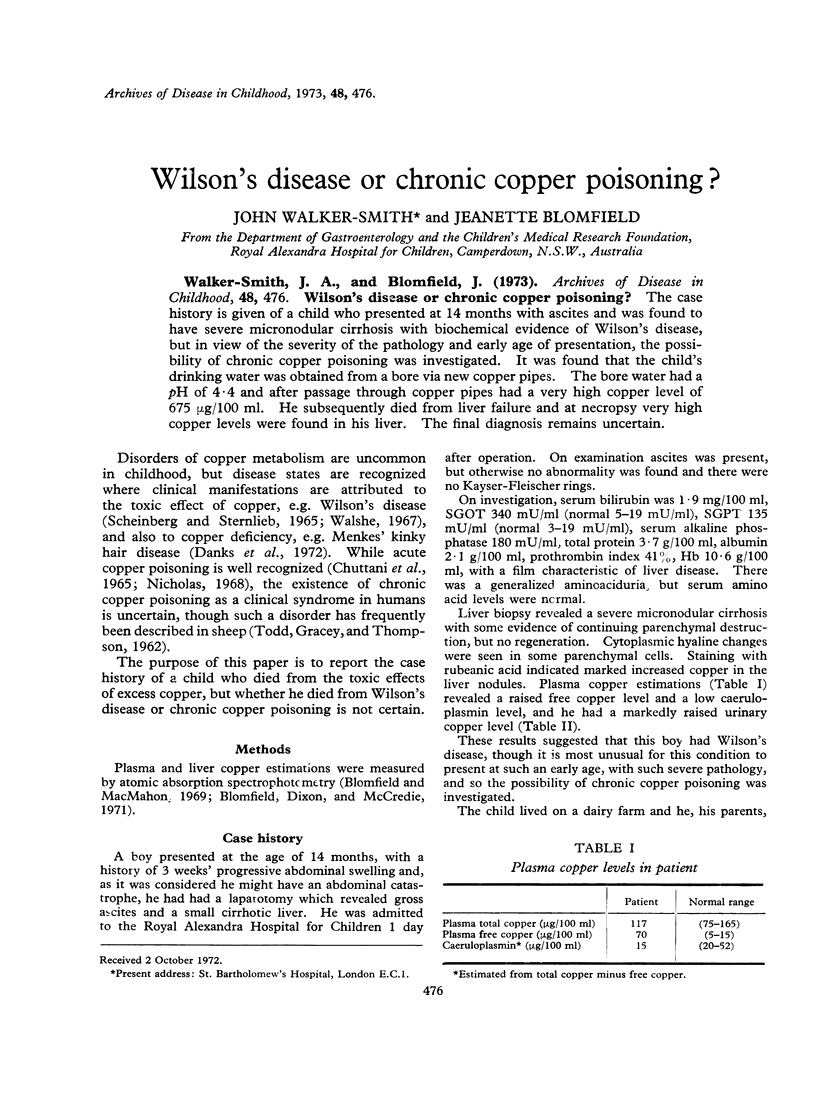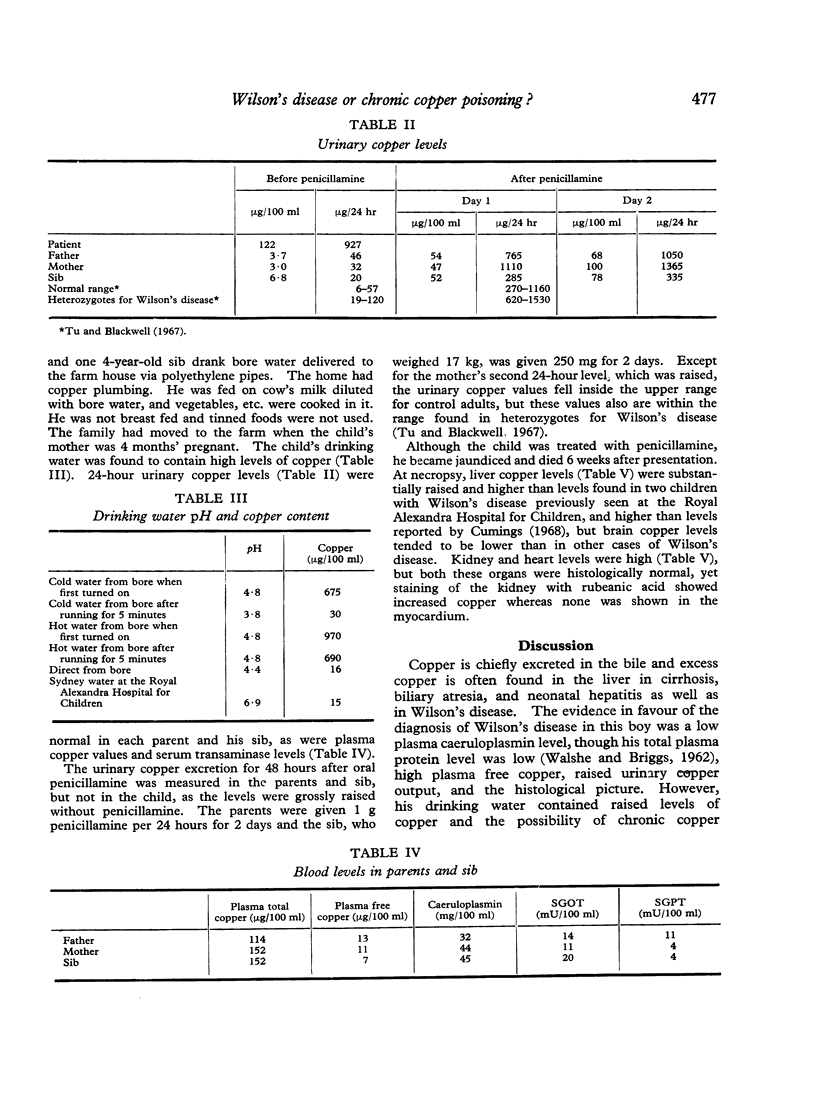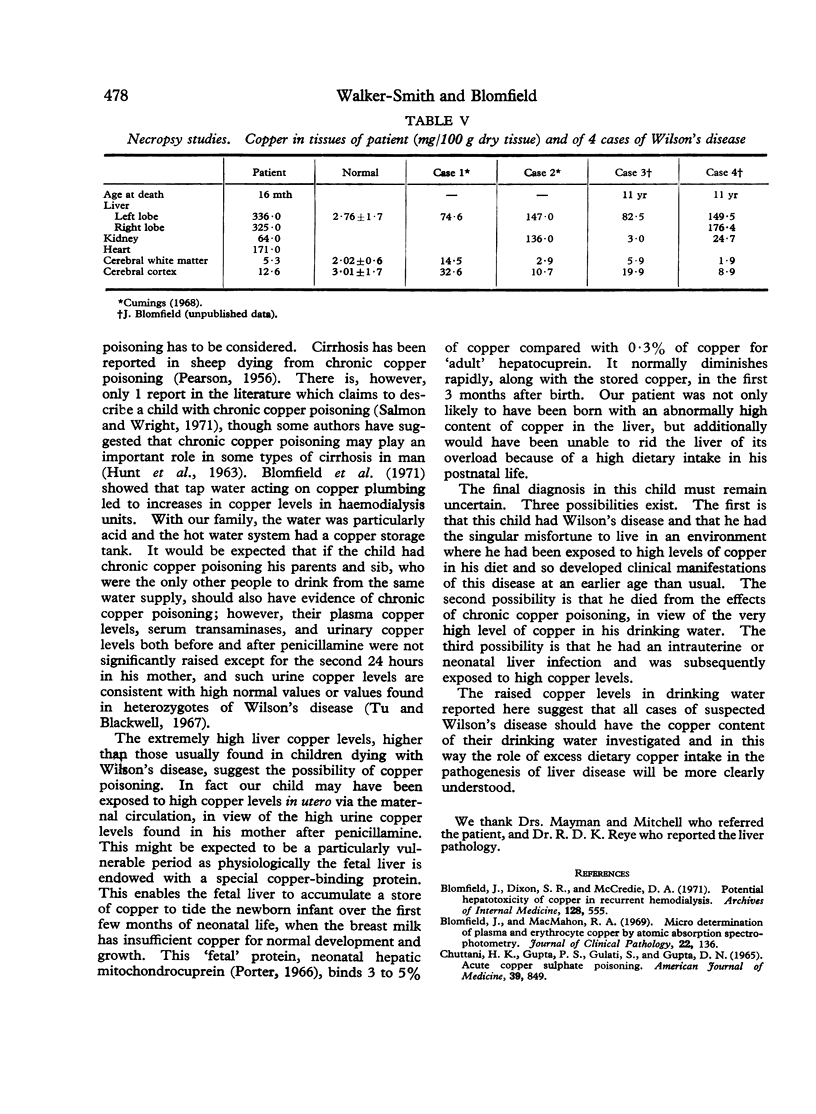Abstract
The case history is given of a child who presented at 14 months with ascites and was found to have severe micronodular cirrhosis with biochemical evidence of Wilson's disease, but in view of the severity of the pathology and early age of presentation, the possibility of chronic copper poisoning was investigated. It was found that the child's drinking water was obtained from a bore via new copper pipes. The bore water had a pH of 4·4 and after passage through copper pipes had a very high copper level of 675 μg/100 ml. He subsequently died from liver failure and at necropsy very high copper levels were found in his liver. The final diagnosis remains uncertain.
Full text
PDF



Selected References
These references are in PubMed. This may not be the complete list of references from this article.
- Blomfield J., Dixon S. R., McCredie D. A. Potential hepatotoxicity of copper in recurrent hemodialysis. Arch Intern Med. 1971 Oct;128(4):555–560. [PubMed] [Google Scholar]
- Blomfield J., Macmahon R. A. Micro determination of plasma and erythrocyte copper by atomic absorption spectrophotometry. J Clin Pathol. 1969 Mar;22(2):136–143. doi: 10.1136/jcp.22.2.136. [DOI] [PMC free article] [PubMed] [Google Scholar]
- Chuttani H. K., Gupta P. S., Gulati S., Gupta D. N. Acute copper sulfate poisoning. Am J Med. 1965 Nov;39(5):849–854. doi: 10.1016/0002-9343(65)90105-1. [DOI] [PubMed] [Google Scholar]
- Danks D. M., Campbell P. E., Walker-Smith J., Stevens B. J., Gillespie J. M., Blomfield J., Turner B. Menkes' kinky-hair syndrome. Lancet. 1972 May 20;1(7760):1100–1102. doi: 10.1016/s0140-6736(72)91433-x. [DOI] [PubMed] [Google Scholar]
- HUNT A. H., PARR R. M., TAYLOR D. M., TROTT N. G. RELATION BETWEEN CIRRHOSIS AND TRACE METAL CONTENT OF LIVER WITH SPECIAL REFERENCE TO PRIMARY BILIARY CIRRHOSIS AND COPPER. Br Med J. 1963 Dec 14;2(5371):1498–1501. doi: 10.1136/bmj.2.5371.1498. [DOI] [PMC free article] [PubMed] [Google Scholar]
- Nicholas P. O. Food-poisoning due to copper in the morning tea. Lancet. 1968 Jul 6;2(7558):40–42. doi: 10.1016/s0140-6736(68)92905-x. [DOI] [PubMed] [Google Scholar]
- SCHEINBERG I. H., STERNLIEB I. WILSON'S DISEASE. Annu Rev Med. 1965;16:119–134. doi: 10.1146/annurev.me.16.020165.001003. [DOI] [PubMed] [Google Scholar]
- Salmon M. A., Wright T. Chronic copper poisoning presenting as pink disease. Arch Dis Child. 1971 Feb;46(245):108–110. doi: 10.1136/adc.46.245.108. [DOI] [PMC free article] [PubMed] [Google Scholar]
- Tu J. B., Blackwell R. Q. Studies on levels of penicillamine-induced cupriuresis in heterozygotes of Wilson's disease. Metabolism. 1967 Jun;16(6):507–513. doi: 10.1016/0026-0495(67)90079-0. [DOI] [PubMed] [Google Scholar]
- WALSHE J. M., BRIGGS J. Caeruioplasmin in liver disease. A diagnostic pitfall. Lancet. 1962 Aug 11;2(7250):263–265. doi: 10.1016/s0140-6736(62)90171-x. [DOI] [PubMed] [Google Scholar]
- Walshe J. M. The physiology of copper in man and its relation to Wilson's disease. Brain. 1967 Mar;90(1):149–176. doi: 10.1093/brain/90.1.149. [DOI] [PubMed] [Google Scholar]


